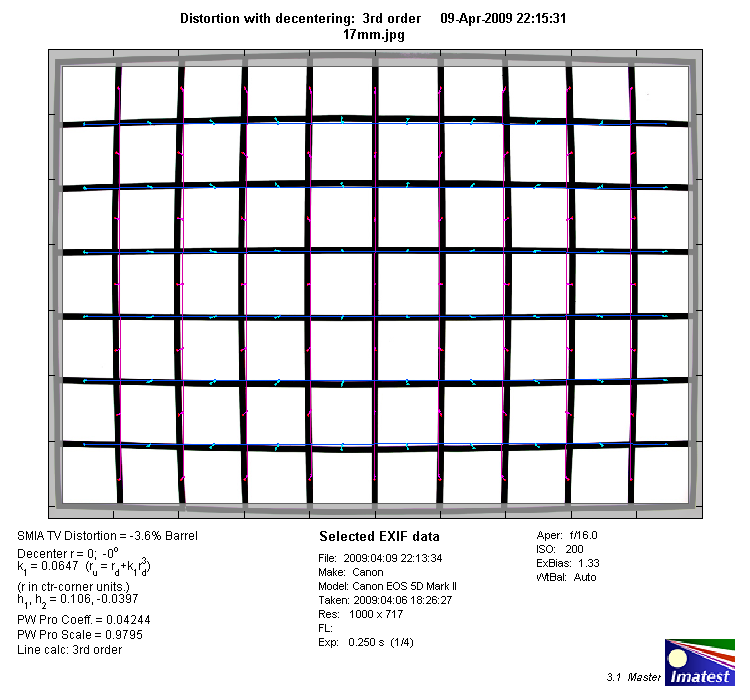|
Canon EF 17-40mm f/4 USM L (full format) - Review / Test Report - Analysis |
|
Lens Reviews -
Canon EOS (Full Format)
|
|
Page 2 of 3

Distortion
Ultra-wide lenses are rarely renowned for a low degree of distortion and the EF 17-40mm is no exception here. At 17mm it produces rather massive barrel distortion (3.6%) which eases the further you zoom towards the long end. However, at 20mm we still have still very pronounced barrel distortion of 2.5%. There is virtually no distortion present at 28mm and at 40mm we've only a slight degree of pincushion distortion. All-in-all no better than expected and no worse either.
|
Move the mouse cursor over the focal length text marks below to observe the respective distortion
|
| 17mm |
20mm |
28mm |
40mm |
|

|
Vignetting
Full format DSLRs are unforgiving beings with respect to vignetting and this does also show up with our Canon lens specifically at 17mm @ f/4 where you can observe a vignetting beyond 2EV - this is easily visible in field images. The situation is acceptable at f/5.6 but if you can you should use f/8 at this focal length. The problem decreases at 24mm and more so at 40mm but it's still a good idea to stick to apertures smaller than f/5.6 here. The situation is significantly improved at 20mm - the corners are still not great here but the lens is almost surprisingly good at f/8 (for a lens in this focal length class).

Here're some visuals at max. aperture:
17mm @ f/4:

|
40mm @ f/4:

|
Note: Sorry for not providing the vignetting data at 20mm and 28mm but initially we planned to test this lens at 3 focal lengths only and the vignetting tests were the first ones in the series.
MTF (resolution)
The most interesting aspect is naturally the resolution characteristic of a lens and the EF 17-40mm f/4 USM L left mixed impressions here. The problem is, again, the 17mm setting. The center and even the border performance is very high here but there isn't really anything left deserving the word "resolution" in the extreme corners at f/4 and f/5.6. If you require at least a decent corner resolution you should stick to f/11 at this focal length. The lens behaves comparatively harmonious at 28mm and 40mm with generally good to very good figures across the image field and the tested aperture range.
Please note that the MTF results are not directly comparable across the different systems!
Below is a simplified summary of the formal findings. The chart shows line widths per picture height (LW/PH) which can be taken as a measure for sharpness.
If you want to know more about the MTF50 figures you may check out the corresponding Imatest Explanations
Chromatic Aberrations (CAs)
Chromatic aberrations (color shadows at harsh contrast transitions) is relatively moderate for a full format lens. However, the chart below doesn't tell the whole story because we obtain the lateral CAs at the "borders". The extreme corners are quite a bit worse at 17mm where they decrease the already mediocre resolution perception a bit further.
_

|